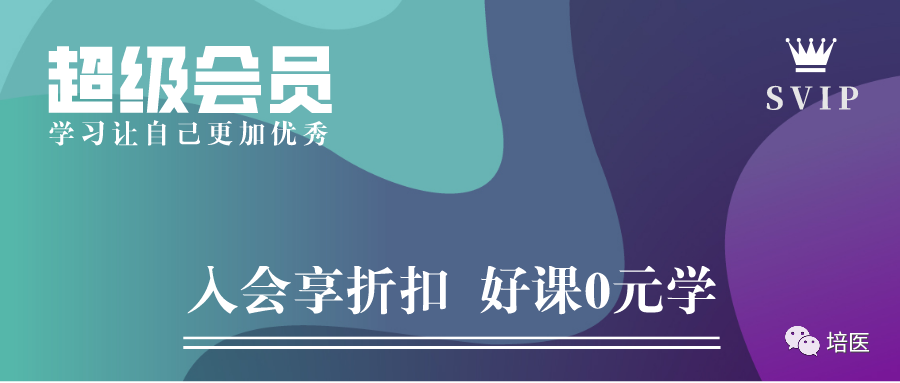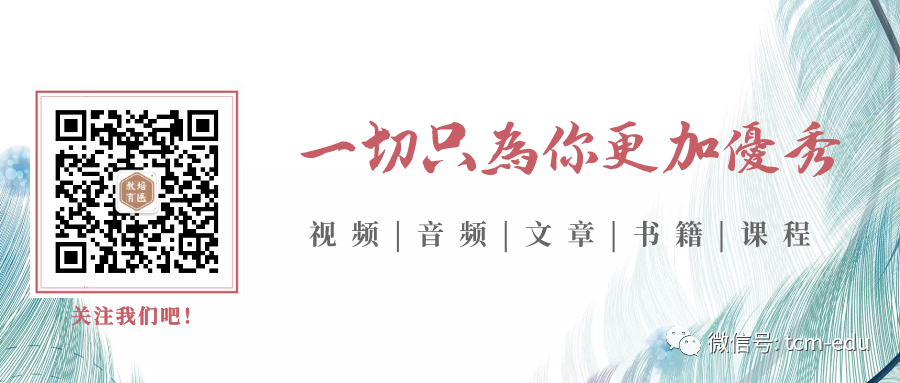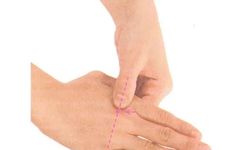Subscribe to Topics and Featured Articles
Health Preservation Strategies for a Harmonious Constitution – Do No Harm, Follow NatureHarmonious Constitution (Healthy Group) – Energetic and OptimisticThe harmonious constitution, as the name suggests, is a balanced constitution. From the perspective of TCM constitution health preservation, the harmonious constitution is the most enviable and healthiest type. Individuals with a harmonious constitution are physically and mentally healthy, have a rosy complexion, hydrated and elastic skin, and are less prone to wrinkles, acne, or pigmentation; they have thick, black, and shiny hair; bright eyes with few bags or dark circles; a keen sense of smell; rosy and shiny lips; a well-proportioned body with firm muscles; a good appetite; quality sleep, waking up refreshed and rarely feeling fatigued. In terms of personality, individuals with a harmonious constitution are easy-going, cheerful, stable, and confident, with strong adaptability to both natural and social environments. They rarely get sick and recover quickly even when they do. We vividly refer to them as the “healthy group.”1. What is a Harmonious Constitution?A harmonious constitution is characterized by good innate qualities and proper postnatal nurturing, with moderate body shape, rosy complexion, abundant energy, and strong organ function. It is the most stable and healthiest constitution, accounting for approximately 32.75% of the population, or about one-third. Males are more prevalent than females, and the proportion of individuals with a harmonious constitution decreases with age.2. Characteristics of a Harmonious Constitution1. General CharacteristicsYin and Yang, Qi and Blood are harmonized, with moderate body shape, rosy complexion, and abundant energy as the main features.2. Physical CharacteristicsWell-proportioned and robust physique.3. Common ManifestationsRosy complexion and skin, thick and shiny hair, bright eyes, clear nasal color, keen sense of smell, normal taste, rosy lips, abundant energy, resistance to fatigue, tolerance to cold and heat, peaceful sleep, good appetite, normal bowel movements, pale red tongue, thin white coating, and a soft, strong pulse.4. Psychological CharacteristicsEasy-going, cheerful, and sunny personality, not overly concerned with trivial matters, and not easily depressed or angry.5. Disease TendencyGenerally, they are less prone to illness.6. Adaptability to External EnvironmentsStrong adaptability to both natural and social environments.3. Check if You Have a Harmonious Constitution1. Are you energetic? (Yes)2. Do you easily feel fatigued? (No)3. Is your voice weak? (No)4. Do you feel gloomy? (No)5. Are you more sensitive to cold than others? (No)6. Can you adapt to changes in the natural and social environment? (Yes)7. Do you have trouble sleeping? (No)8. Do you easily forget things? (No)If most of your answers are the same or very close to the standard answers, you can be classified as having this constitution.4. Typical CaseMr. Wang usually has a rosy complexion, and everyone says he has bright eyes. He feels energetic, enjoys his meals, and sleeps soundly. He has a well-proportioned body and an easy-going personality, making him very pleasant to be around. He rarely gets sick, and when he does catch a cold, drinking more water and resting is usually enough. During health check-ups, doctors often praise him for being particularly healthy.5. Constitution AnalysisMr. Wang is a typical example of a harmonious constitution.A harmonious constitution values balance and harmony, much like a scale where the healthy pointer is generally at the center “0”, with the scale swaying left and right, representing the ideal constitution type.However, just as the moon has its phases and the seasons have their changes, there are no evergreens or perpetual motion machines. If you overestimate your health, working or playing all night, sleeping during the day, being lazy, or eating irregularly for a long time, your harmony may be disrupted. Therefore, maintaining a harmonious constitution is crucial.If you can maintain a regular schedule, eat fresh and varied foods, and exercise consistently, you can maintain the best state of this constitution without deliberately seeking supplements or adjustments.A harmonious constitution is the most stable and healthiest type, requiring good innate qualities and reasonable postnatal nurturing. Individuals with a harmonious constitution have a moderate body shape, rosy complexion, abundant energy, normal organ function, strong adaptability to society and nature, and rarely get sick. Generally, there are more males than females, and the proportion of individuals with a harmonious constitution decreases with age. A harmonious constitution is largely determined by innate qualities, but postnatal nurturing should not be overlooked. If postnatal nurturing is neglected, even individuals with good innate qualities may develop an imbalanced constitution.Exercise and Health Preservation – Balance Activity and Rest, Act According to One’s AbilityIndividuals with a harmonious constitution generally have good physical fitness and can participate in most sports. The overall principle is to maintain a balance of activity and rest, and to act according to one’s ability. It is important to engage in a variety of reasonable exercises based on one’s age, gender, strengths, and current physical condition, with an emphasis on aerobic exercise.1. Can Individuals with a Harmonious Constitution Overexert Themselves in Exercise?Yes, even individuals with a harmonious constitution should not overexert themselves.Individuals with a harmonious constitution are mostly young and middle-aged, with good innate qualities and strong physical fitness, and thus have strong exercise capabilities. Exercise can mobilize the body’s Yang Qi and achieve postnatal adjustment. Therefore, individuals with a harmonious constitution should exercise according to individual differences, timing, and ability, and stop when necessary.We should distinguish between daily exercise and competitive sports. A harmonious constitution is a classification of constitution that reflects an individual’s overall physiological and psychological state. TCM believes it represents a good state of Yin-Yang balance and unity of body and spirit. Exercise can maintain our physique and enhance fitness. However, excessive exercise or exercise beyond one’s capacity can harm the body. For example, individuals with a harmonious constitution can be young, elderly, children, women, or athletes, but the intensity of exercise differs between young and elderly individuals, and ordinary people cannot compare their exercise capacity with athletes. Additionally, suitable exercise varies by season and time of day. Therefore, even individuals with a harmonious constitution should not push themselves to participate in exercises beyond their capacity, as it may lead to adverse effects.Regarding how to grasp the “degree” of exercise, Hua Tuo combined his medical practice to clearly propose the principle of “the body desires labor, but not to the extreme” to guide exercise health preservation practices, using the physiological phenomenon of “sweating” and the self-perception of “lightness” to grasp and control the amount and intensity of exercise.2. Tai Chi – The Best Exercise for Individuals with a Harmonious ConstitutionIndividuals with a harmonious constitution should adopt a moderate approach to health preservation, so they should choose exercise methods that align with their body and mind, such as walking, Tai Chi, and yoga. Among these exercises, Tai Chi is particularly suitable for individuals with a harmonious constitution. Long-term practice of Tai Chi not only enhances the endurance and flexibility of the body’s muscles but also ensures sufficient internal Qi, smooth blood circulation, and a tranquil mind, aligning with the principles of moderate health preservation.The concept of health preservation through Tai Chi was first proposed in the “Suwen: Discussion on Different Methods and Formulas,” stating, “For diseases of weakness, cold, and heat, the treatment should involve guiding and stretching.” Here, “guiding” refers to an ancient method of fitness that uses intention to guide movement, combined with breathing, circulating Qi from top to bottom or bottom to top, similar to modern Qigong or Tai Chi exercises.Tai Chi is a national treasure of China. Regular practice of Tai Chi can yield unexpected benefits for physical and mental health, integrating Qi training, strength cultivation, fitness, health preservation, self-defense, and self-cultivation into one, making it a suitable health preservation method for regular exercise. Tai Chi requires a calm mind, clear vision, agile body, precise hands, and steady steps, with the heart as the commander. Beginners can practice the 24-form Tai Chi, which was compiled by experts in Tai Chi from the National Sports Administration of China in 1956, drawing from the essence of Yang-style Tai Chi. This set is beginner-friendly, with concise movements that encapsulate the essence of traditional Tai Chi, suitable for all ages.1. Movements and Key Phrases(1) Starting Position: Stand with feet apart, arms raised forward, knees bent, and palms pressed down.(2) Wild Horse Parts Mane: There are three methods: ① Gather feet and embrace the ball, step left, and bow stance to part hands. ② Sit back, kick the foot, follow the ball, step right, and bow stance to part hands. ③ Sit back, kick the foot, follow the ball, step left, and bow stance to part hands.(3) White Crane Spreads Wings: Step forward with half a step, embrace the ball in front of the chest, sit back and raise arms, and part hands.(4) Embrace the Knee and Twist Step: There are three methods: ① Turn left to drop hands, turn right to raise arms, step forward, bend elbows, and bow stance to embrace and push. ② Sit back, kick the foot, follow the ball, step forward, bend elbows, and bow stance to embrace and push. ③ Sit back, kick the foot, follow the ball, step forward, bend elbows, and bow stance to embrace and push.(5) Hand Waves Pipa: Follow the step to extend hands, sit back and push palms, and part arms.(6) Reverse Roll Back: Spread both hands, lift knees, bend elbows, step back, and push palms. Repeat three times.(7) Left Grasp the Sparrow’s Tail: Turn right to gather feet and embrace the ball, step left, bow stance to extend arms, turn left to spread palms, sit back and turn right to pull down, step left to press wrists, bow stance to push forward, sit back to part hands, bend elbows, and gather palms, bow stance to press palms.(8) Right Grasp the Sparrow’s Tail: Sit back to kick the foot, turn right to part hands, return to gather feet and embrace the ball, step right, bow stance to extend arms, turn right to spread palms, sit back and turn left to pull down, step right to press hands, bow stance to push forward, sit back to part hands, bend elbows, and gather palms, bow stance to push palms.(9) Single Whip: Turn left to kick the foot, turn right to gather feet and extend arms, step forward and hook hands, bow stance to push up.(10) Cloud Hands: Turn right to drop hands, turn left to perform cloud hands, step together to press palms, turn right to perform cloud hands, step forward to press palms. Repeat twice.(11) Single Whip: Step diagonally to drop, turn right to raise arms, step forward and hook hands, bow stance to press palms.(12) High Stepping Horse: Follow the step to sit back and extend hands, step forward to push palms.(13) Right Kick: Gather feet and hands, step left, bow stance to draw arcs, gather knees, and kick feet.(14) Double Peaks Penetrate Ears: Gather feet and drop hands, step forward to gather hands, bow stance to penetrate fists.(15) Turn Body Left Kick: Sit back to kick the foot, turn left to extend hands, return to gather feet and raise knees, kick feet.(16) Left Lower Position Stand Alone: Gather feet and hook hands, squat down, push palms down, kick feet, turn around, and raise knees.(17) Right Lower Position Stand Alone: Drop feet, turn left to hook hands, squat down, push palms down, kick feet, turn around, and raise knees.(18) Right Jade Girl Weaves: Drop feet and drop hands, follow the ball to step right, bow stance to push forward.(19) Left Jade Girl Weaves: Sit back to drop hands, follow the ball to step left, bow stance to push forward.(20) Undersea Needle: Follow the ball to drop hands, sit back to lift hands, step forward to insert palms.(21) Flashing Through the Arm: Gather feet and raise arms, step forward to flip palms, bow stance to push forward.(22) Turn Body to Move and Block: Sit back to kick the foot, turn right to wave palms, gather feet to clench fists, step forward to move and block, follow the ball to rotate arms, step forward to wrap fists and block palms, bow stance to punch.(23) Like Sealing and Closing: Pass through arms to flip palms, sit back to gather palms, bow stance to push palms.(24) Cross Hands and Conclude: Sit back to kick the foot, turn right to part hands, shift weight to kick the foot and draw arcs, gather feet to embrace, rotate arms to part hands, and lower to conclude.2. Precautions for Practicing Tai Chi(1) Calm Mind and Relaxed Body: Mentally eliminate distractions, avoid external disturbances, and completely relax all joints, muscles, and internal organs.(2) Smooth and Continuous: During movement transitions, the lower body is led by the waist, the waist leads the knees, and the knees lead the feet; the upper body is led by the waist, the back leads the shoulders, the shoulders lead the elbows, and the elbows lead the hands. The end of one movement is the beginning of the next, with no interruptions or pauses between movements.(3) Clear Distinction Between Empty and Solid: “Movement is like drawing silk, stepping is like a cat walking.” The lower body has the leg bearing the main weight as solid, while the leg supporting or moving is empty; the upper body has the arm embodying the main content of the movement as solid, while the assisting arm is empty.(4) Natural Breathing: The breathing methods for practicing Tai Chi include natural breathing, abdominal breathing, and breathing in sync with movements. Regardless of which method is used, it should be natural, even, and slow, coordinating with movements. Beginners should use natural breathing.3. Other Common Traditional Exercise Projects Suitable for Individuals with a Harmonious ConstitutionTraditional TCM exercise health preservation methods have been developed through continuous summarization and improvement by health preservation experts over the ages, forming a relatively systematic theory, principles, and methods that can achieve excellent fitness, disease treatment, and longevity effects. TCM exercise health preservation emphasizes the coordination and unity of the body inside and out, harmony and moderation, and has developed different schools and various exercise health preservation methods. Besides Tai Chi, well-known methods include Ba Duan Jin, Wu Qin Xi, and Yi Jin Jing. These traditional exercise projects focus on adjusting consciousness to nourish the spirit, guiding Qi with intention, regulating breathing to practice Qi, and using Qi to move blood. Through the movement of the body and muscles, they ensure smooth meridians and nourish the entire body. This way, both body and spirit are well-equipped, all meridians are open, and the organs are harmonized, achieving a state of “Yin balanced and Yang secret,” thus enhancing physical and mental health and maintaining vibrant vitality.1. Ba Duan JinBa Duan Jin is a form of ancient guiding method that combines physical activity with breathing activity for fitness. Ba Duan Jin strengthens muscles and bones, nourishes Qi and enhances strength, and has functions of promoting Qi and blood circulation, coordinating the five internal organs. It is very suitable for elderly friends to practice, but it is best to learn it formally first.Modern research has also confirmed that the intensity and sequence of movements in Ba Duan Jin conform to the laws of kinesiology and physiology. Its movements are gentle, slow, and smooth. Ba Duan Jin can improve the regulation of the nervous system and body fluids, enhance blood circulation, and provide gentle massage to the abdominal organs, positively affecting the nervous system, cardiovascular system, digestive system, respiratory system, and motor organs, making it a good guiding exercise for fitness.(1) Seated Ba Duan Jin① Calm the Mind and Sit Still: Sit cross-legged, keep the head upright, gaze forward, relax the shoulders, and keep the spine straight. Lightly hold the hands on the thighs in front of the abdomen. Sit still for 3-5 minutes.② Hand Embrace the Occiput: Lightly tap the teeth 20-30 times, swallowing saliva when it increases, known as “swallowing saliva.” Then cross the hands and slowly raise them from in front of the body over the head to the occiput, applying force forward while the head pushes back, creating a stretching and relaxing motion in the occipital muscles. Repeat this for 10 breaths.③ Finger Tapping the Jade Pillow: Following the previous movement, pull the ears with both hands, placing the index fingers on the sides of the Jade Pillow points, then place the index fingers on the backs of the middle fingers, and gently tap the Jade Pillow points with the index fingers, producing a sound. Repeat this for 10 times.④ Slightly Rock the Heavenly Pillar: Lower the head slightly to keep the head muscles tense, and turn the head left and right frequently. Repeat this for about 20 times.⑤ Hand Rubbing the Jingmen: After taking a few natural deep breaths, hold the breath for a moment, then rub the hands together to warm them, and use both hands to massage the two sides of the kidney points about 20 times.⑥ Left and Right Rolling: Following the previous movement, move both hands from the waist to the front, extend the legs, spread the fingers slightly, and bend them slightly, moving the hands in a circular motion like a wheel, rolling from back to front several times, then reverse the direction.⑦ Supporting and Pressing the Feet: Following the previous movement, interlace the fingers with palms facing up, perform an upward lifting motion; pause for a moment, then turn the palms to face forward and press down. After a brief pause, release the interlaced hands and bend forward to touch the feet, ensuring the knees do not bend. Repeat this several times.⑧ Ren and Du Circulation: Sit upright, gargle and swallow saliva, focus on the lower dantian, guiding the internal Qi from the lower dantian along the Ren meridian down to the Huiyin point, then follow the Du meridian along the spine up to the end of the Du meridian, and then back down along the Ren meridian.(2) Standing Ba Duan Jin① Both Hands Support the Sky to Regulate the Triple Burner: Stand naturally with feet shoulder-width apart, chest in, abdomen in, and relax the waist and spine. Keep the head level, lightly close the mouth, calm the mind, and sink the Qi to the lower dantian. Slowly raise both hands from the sides to above the head, turning the palms upward, exerting force upward, and the heels should rise with the hands. After 6 repetitions, turn the palms downward and slowly press down to the lower abdomen, returning to the original position.② Left and Right Open the Bow Like Shooting Eagles: Stand naturally, step left with the left foot, squat into a horse stance, and place both hands outside the hips. Then, draw an arc from the chest upward to shoulder height. Pull the right hand to the right to shoulder height, about two fist widths away from the chest, as if drawing a bow; the left hand forms an arrow and extends to the left, turning the head to the left and gazing through the left index finger into the distance, as if holding a bow and waiting to shoot. After a brief pause, rise and draw both hands back down to the chest while retracting the left leg, returning to a natural standing position. This is the left style; the right style is the opposite. Alternate sides for 6 repetitions.③ Regulating the Spleen and Stomach Requires Single Lifting: Stand naturally, slowly raise the left hand from the side to the head, turning the palm upward and exerting force upward while pressing down with the right hand. After several lifts and presses, lower the left hand back down to the side. The right hand performs the same action as the left, but in the opposite direction.④ Five Labors and Seven Injuries Look Back: Stand naturally with feet shoulder-width apart, arms hanging down, calm the mind, and sink the Qi to the lower dantian. Slightly turn the head to the left, gaze at the left rear, pause briefly, then return to center and turn to the right, gazing at the right rear, pausing again, and returning to center. Repeat this for 6 times.⑤ Shake Head and Wag Tail to Eliminate Heart Fire: Stand with feet apart, squat into a horse stance. Keep the upper body straight and slightly lean forward, gaze forward, and press both hands on the knees, with elbows extended outward. Use the waist as the axis to swing the torso in an arc to the left front, bending the left arm and straightening the right arm, with the elbow extended outward, and the hips pushed to the right. After a brief pause, swing to the right front. Repeat this for 6 times.⑥ Both Hands Climb the Feet to Strengthen the Kidneys and Waist: Stand relaxed with feet shoulder-width apart. Raise both arms to shoulder height, turning the palms upward, and perform an upward lifting motion. After a brief pause, straighten the legs and bend forward, reaching for the feet, pausing briefly, then slowly rising with both hands raised above the head, arms straight, palms facing forward, and then lowering the arms back to the sides.⑦ Clenching Fists and Glaring to Increase Strength: Stand with feet apart, squat into a horse stance. Clench both fists with palms facing down. Turn the head slightly to the left, gazing through the left fist into the distance, while retracting the right fist. This creates a sense of “striving for strength.” Then, retract the left fist and strike with the right fist, following the same principle. Repeat this for 6 times.⑧ Seven Bounces Behind to Eliminate All Illnesses: Stand with feet together, legs straight, and relax the body. Let the arms hang down naturally, fingers together, palms facing forward. Then, press both palms down and lift the heels slightly off the ground, pausing briefly, then lowering the heels back to the ground. Repeat this for 6 times.2. Yi Jin JingYi Jin Jing combines breath regulation with static strength to improve the function of internal organs, mobilize the joints of the limbs, promote smooth blood circulation, and enhance muscle strength, making it a method for strengthening and health preservation. Yi Jin Jing includes both internal and external training methods, each with 12 postures. The internal training of Yi Jin Jing uses standing postures, gradually enhancing the functions of the meridians and internal organs through breathing guidance. Most of the movements involve static strength. Breathing should be comfortable and natural, without holding the breath. The 12 postures of Yi Jin Jing include Wei Tuo Presents the Pestle, Horizontal Carrying the Demon Pestle, Palm Supporting the Heavenly Gate, Star Picking and Changing, Three Plates Falling to the Ground, Clawing and Spreading Wings, Pulling Back the Tail of Nine Cows, Nine Ghosts Pulling the Horse Knife, Green Dragon Exploring the Claw, Tiger Lying in Wait for Food, Bowing Posture, and Work Tail Posture.(1) First Posture: Wei Tuo Presents the PestleBoth arms bent at the elbows, slowly raise to the chest in an embracing ball posture, bending the wrists to stand the palms, fingers pointing up, palms facing each other (about 10 cm apart). This movement requires the shoulders, elbows, and wrists to be on the same plane, coordinating with breathing for 8-20 repetitions.(2) Second Posture: Horizontal Carrying the Demon PestleFeet shoulder-width apart, firmly planted, knees slightly relaxed; both hands slowly spread from the chest to the sides, palms facing outward, looking forward. Inhale while expanding the chest and pushing the arms back; exhale while curling the fingertips inward and pushing outward. Repeat this for 8-20 times.(3) Third Posture: Palm Supporting the Heavenly GateFeet apart, toes touching the ground, heels lifted; both hands raised above the head, palms facing up, with the middle fingers about 3 cm apart; relax the shoulders and bend the elbows, looking at the back of the hands. The tongue touches the upper palate, and breathing is even. Inhale while using internal strength to push upward with both hands, while simultaneously pushing down with the legs; exhale while relaxing the whole body, turning the palms forward and downward. When concluding, both palms turn into fists, with the backs of the fists facing forward, and the upper limbs slowly retract to the waist, with the fists facing up and the heels touching the ground. Repeat this for 8-20 times.(4) Fourth Posture: Star Picking and Changing PostureStep the right foot slightly forward to form a diagonal eight-character stance with the left foot, leaning slightly to the left; bend the knees, lift the right heel, and sink the body into a right empty step. Raise the right hand high, palm facing down, tilting the head slightly to the right, gazing at the palm of the right hand; the left arm bends naturally behind the back. Inhale while lifting the head upward and pushing the shoulders back; exhale while relaxing the whole body, then switch sides to practice. Repeat this for 5-10 times.(5) Fifth Posture: Pulling Back the Tail of Nine Cows PostureStep forward with the right foot, bending the knee into a right bow stance. The right fist is raised to the front, gazing at the fist; the left fist is clenched, with the left arm bent and hanging behind. Inhale while tightening both fists inward, bringing the right fist to the right shoulder and the left fist down behind; exhale while relaxing both fists and returning to the preparatory position. Then turn the body to the left bow stance, alternating hands. Repeat this for 5-10 times with breathing.(6) Sixth Posture: Clawing and Spreading Wings PostureFeet apart, both arms extended forward, palms facing forward, fingers spread apart, with the tiger mouth facing each other, gazing forward. Then, slowly spread both palms apart, raising the upper limbs to form a horizontal line, palms facing outward, while lifting the heels. Inhale while extending both palms with internal strength, and exhale while relaxing the arms. Repeat this for 8-12 times.(7) Seventh Posture: Nine Ghosts Pulling the Horse Knife PostureFeet together, heels apart to form an “eight” shape; both arms crossed in front of the chest. The left hand bends at the elbow, moving backward, forming a hook hand behind, with the fingertips pointing up; the right hand bends at the elbow, extending backward, pulling the left hand’s fingers, forming a neck-holding position. The toes grip the ground, and the body leans forward as if drawing a knife. Inhale while pulling tightly with both hands, and exhale while relaxing. Alternate sides. Repeat this for 5-10 times.(8) Eighth Posture: Three Plates Falling to the Ground PostureStep the left foot to the left, squatting into a horse stance. Keep the upper body straight, with both hands on the waist, then bend the elbows and turn the palms upward, raising the forearms as if holding a heavy object; pause briefly, then turn the palms downward, extending the forearms straight and relaxing as if putting down the heavy object. Perform this movement with breathing, inhaling as if holding an object, and exhaling as if putting it down. Repeat this for 5-10 times. When concluding, slowly straighten the legs, retract the left foot, and stand upright.(9) Ninth Posture: Green Dragon Exploring the Claw PostureFeet apart, both hands in a protective fist at the waist. Extend the right hand to the left front, fingers curled into a hook hand, while the upper body turns left. The waist rotates from left to right, and the right hand moves in a horizontal circle from left to right, while the upper body leans forward, exhaling; when the hand reaches the left side of the body, the upper body straightens, inhaling. Alternate sides, performing the opposite movement. Repeat this for 5-10 times.(10) Tenth Posture: Tiger Lying in Wait for Food PostureStep the right foot to the right, bending the right knee into a right bow stance; lean forward with both hands on the ground, slightly raising the head, gazing forward. Inhale while extending both arms, raising the upper body as far forward as possible, shifting the center of gravity forward; exhale while bending the elbows, lowering the chest, and retracting the upper body, shifting the center of gravity backward, preparing to pounce. Repeat this for 5-10 times, then switch to the left bow stance and perform the same movements.(11) Eleventh Posture: Bowing PostureFeet apart, toes pointing inward. Both hands raised slowly to the sides, forcefully embracing the back of the head, fingers tapping the back of the head for a moment. Coordinate with breathing while performing the bending motion; inhale while straightening the body, gazing forward, as if lifting something; exhale while bending the knees and bowing, using the hands to press the head between the knees without lifting the heels off the ground. Repeat this for 8-20 times based on physical strength.(12) Twelfth Posture: Work Tail PostureFeet apart, both hands raised from the chest to above the head, gazing at the palms as they move, keeping the body upright without arching the back or protruding the abdomen; interlace the fingers, rotate the wrists, and push upward, leaning back, gazing upward; then bend forward, lowering the arms, pushing the palms to the ground, raising the head and glaring. Exhale while bending down, slightly lifting the heels; inhale while standing upright, with the heels touching the ground; repeat this for 21 times. Conclude by standing upright, raising both arms to the sides, and stretching 7 times.3. Wu Qin XiWu Qin Xi is a set of exercises created by the famous physician Hua Tuo during the Eastern Han Dynasty, based on the activity characteristics of five animals: tiger, deer, bear, monkey, and bird, combined with the functions of the human organs, meridians, and Qi and blood. Wu Qin Xi embodies medical principles within movements, integrating health preservation and rehabilitation benefits into vivid and dynamic “drama,” which distinguishes it from other guiding methods. Wu Qin Xi consists of five parts: Tiger Play, Deer Play, Bear Play, Monkey Play, and Bird Play, with each movement mimicking the corresponding animal’s actions. The traditional Wu Qin Xi, also known as Hua Tuo’s Five Animal Play, includes 54 movements; the simplified version created by the Chinese Sports Commission has two movements for each animal: Tiger Lifting, Tiger Pouncing; Deer Resisting, Deer Running; Bear Moving, Bear Shaking; Monkey Lifting, Monkey Picking; Bird Stretching, Bird Flying. Each movement is performed symmetrically on both sides, coordinated with breath regulation.(1) Tiger PlayStand in a proper posture with heels together, arms hanging naturally, and gaze forward.Left Style: ① Bend the knees and squat, shifting the weight to the right leg, with the left foot stepping forward lightly, the sole touching the ground near the right ankle, while both palms are raised to the sides of the waist, palms facing up, gazing at the left front. ② Step the left foot diagonally forward, following with the right foot half a step, shifting the weight to the right leg, with the left foot lightly touching the ground, while both fists are raised along the chest, palms facing backward, raised to mouth level, flipping the fists to press forward at chest height, palms facing forward, with the tiger mouths facing each other, gazing at the left hand.Right Style: ① Step the left foot forward half a step, following with the right foot to the left ankle, shifting the weight to the left leg, with the right foot lightly touching the ground, while both fists are retracted to the sides of the waist, palms facing up, gazing at the right front. ② The second movement is the same as the left style, but mirrored. Repeat the left and right tiger pounces for an unlimited number of times.(2) Deer PlayStand naturally upright, arms hanging down, and gaze forward.Left Style: ① Bend the right leg, sitting back, extending the left leg forward, slightly bending the left knee, with the left foot lightly touching the ground; extend the left hand forward, slightly bending the left arm, with the left palm facing right, and the right hand placed inside the left elbow, palm facing left. ② Both arms rotate counterclockwise in front of the body, with the left hand making a larger circle than the right hand, while also rotating the waist, hips, and sacrum counterclockwise. Over time, this will transition to using the waist, hips, and sacrum to drive the arm rotations.Right Style: The movements are the same as the left style, but mirrored, with the rotation direction also reversed.(3) Bear PlayStand naturally with feet parallel, shoulder-width apart, arms hanging down, and gaze forward. First, bend the right leg, slightly turning the body to the right, while the right shoulder moves forward and down, causing the right arm to lower, while the left shoulder extends outward, and the left arm slightly bends upward. Then, bend the left leg, with the remaining movements mirrored. Repeat this swaying motion for an unlimited number of times.(4) Monkey PlayStand in a proper posture with heels together, arms hanging down, and gaze forward.Left Style: ① Bend the knees, lightly step forward with the left foot, while the left hand reaches forward at mouth level as if reaching for something, curling the fingers into a hook hand at the endpoint, with the wrist naturally relaxed. ② Step forward lightly with the right foot, following with the left foot to the right ankle, lightly touching the ground, while the right hand reaches forward at mouth level as if reaching for something, curling the fingers into a hook hand at the endpoint, while the left hand retracts to the left rib. ③ Step back with the left foot, following with the right foot to the left ankle, lightly touching the ground, while the left hand reaches forward at mouth level as if reaching for something, curling the fingers into a hook hand at the endpoint, while the right hand retracts to the right rib.Right Style: The movements are the same as the left style, but mirrored.(5) Bird PlayStand with feet parallel, arms hanging down, and gaze forward.Left Style: ① Step forward with the left foot, following with the right foot half a step, lightly touching the ground with the toes, while both arms slowly raise from the front, palms facing up, and lift to shoulder height, then extend outward, inhaling deeply. ② Bring the right foot forward to meet the left foot, lowering both arms from the sides, palms facing down, while squatting, crossing the arms under the knees, palms facing up, exhaling deeply.Right Style: The movements are the same as the left style, but mirrored.Entertainment and Health Preservation – Enjoyable and Beneficial for Body and MindIndividuals with a harmonious constitution generally have good physical and psychological qualities, with strong adaptability to nature and society. Therefore, they can try various beneficial entertainment activities based on their interests.1. Singing and Dancing to Promote Lung QiSinging is currently the most popular and simplest form of entertainment, which can be done anywhere and anytime without disturbing others. Individuals with a harmonious constitution can sing more, or perform operas or hum tunes, which helps promote lung Qi and maintain health.Middle-aged and elderly individuals can join square dance teams, ensuring they do not disturb others while dancing daily, which is beneficial for limb activity and uplifting mood. Additionally, many places have amateur entertainment organizations for middle-aged and elderly individuals, which those with a harmonious constitution can choose to join.2. Watching Dramas to Cultivate EmotionThere are various forms of drama today, such as movies, plays, and TV dramas. Individuals with a harmonious constitution can watch dramas appropriately, savoring the lives of different characters and enriching their spiritual world. However, it is important to avoid excessive screen time to prevent eye strain and health issues. Avoid watching overly tense dramas for extended periods to prevent affecting one’s emotions.3. Traveling Outdoors to Refresh the MindIndividuals with a harmonious constitution can invite family and friends to travel, especially to beautiful natural scenic areas, which not only enhances family bonds and friendships but also promotes communication. Activities like hiking and walking during travel can also provide physical exercise. It is important to avoid overexertion and acclimatization issues, and to carry necessary medications such as cooling oil, wind oil, Huoxiang Zhengqi water, and Baojiyi pills.4. Planting Flowers and Plants to Add VitalityIndividuals with a harmonious constitution, if conditions allow, can plant green plants and ornamental flowers at home or in the yard, which can freshen the air, improve living conditions, and achieve a pleasant effect, giving a sense of vitality. For example, plants like aloe vera, spider plant, snake plant, and philodendron can absorb toxic chemicals; while ivy, iron tree, chrysanthemum, kumquat, half-branch lotus, rose, camellia, pomegranate, milan, daisy, wax plum, and marigold can effectively eliminate harmful gases like sulfur dioxide and carbon monoxide; aromatic flowers like rose, osmanthus, violet, jasmine, lemon, rose, dianthus, lily of the valley, and crepe myrtle produce volatile oils with significant antibacterial effects. It is important to avoid planting certain flowers with strong scents if there are pregnant women at home, as they may trigger or worsen nausea. Generally, flowers and plants should not be placed in the bedroom at night, as they release carbon dioxide, which can worsen air quality in the bedroom.Dietary Health Preservation – Balanced Meat and Vegetables, Reasonable Three MealsIndividuals with a harmonious constitution generally have good appetites and digestive functions. Especially young people may easily eat indiscriminately or be picky eaters. Therefore, individuals with a harmonious constitution should pay attention to balancing meat and vegetables, having reasonable three meals, and maintaining a balanced diet.1. What are the Dietary Principles for Individuals with a Harmonious Constitution?Individuals with a harmonious constitution generally have no special dietary restrictions but should follow basic dietary principles.1. Balance Meat and VegetablesCommon foods include grains, meat and eggs, dairy products, bean products, and vegetables and fruits, with grains, bean products, and vegetables and fruits as the main components, supplemented with adequate eggs and dairy, and minimizing meat, especially fatty meats. In terms of meat, it is best to eat steamed fish and avoid organ meats.2. Reasonable Three Meals“Eat well for breakfast, eat enough for lunch, and eat less for dinner” is a well-known principle. However, many people, especially young people, skip breakfast or replace it with snacks like biscuits. Research shows that this practice can easily lead to gallstones. Additionally, some white-collar workers tend to have lavish dinners for important guests, leading to overeating at night, which can even trigger acute pancreatitis. In fact, eating less at night can also aid in weight loss.3. Balanced DietIndividuals with a harmonious constitution are generally healthy and rarely fall ill. If they develop health issues due to dietary habits, it would be quite unfortunate! The most basic requirement for a balanced diet is to choose foods according to the seasons, especially fruits and vegetables. For example, in spring, it is advisable to eat more pungent and sweet foods like leeks, cilantro, and radishes, and to eat less sour foods to avoid excessive contraction of Yang Qi; in summer, the diet should be light, avoiding rich and heavy foods, and eating more fresh fruits and vegetables; in autumn, it is good to eat more nourishing foods like tremella, lily, and snow pears; in winter, it is advisable to eat more warming and nourishing foods, avoiding cold and cooling foods.4. Quit Smoking and DrinkingSmoking and alcohol are considered stimulating foods, and it is best to avoid them. Research shows that drinking a small amount of red wine daily (about 50 ml) can help soften blood vessels and protect the heart and brain.2. Suitable Health-Preserving Medicinal Dishes for Individuals with a Harmonious Constitution1. Pumpkin Tofu Soup【Ingredients】300g tofu (diced), 100g pork (diced), 100g shiitake mushrooms (stems removed and diced), 100g fresh mushrooms (diced), 100g yellow soybeans (cooked), 300g pumpkin (peeled, seeded, and sliced), a pinch of salt, and a pinch of pepper.【Method】Add 1200ml of water to a pot and bring to a boil. Add the pumpkin and cook until soft, then let cool and blend into a pumpkin puree. Bring the pumpkin puree back to a boil, add the diced pork, tofu, shiitake mushrooms, fresh mushrooms, and yellow soybeans, and cook until done. Season with salt and pepper, and it is ready to eat.【Effects】Pumpkin has the effects of tonifying the middle and benefiting Qi, resolving phlegm, and expelling pus. Modern research shows it is beneficial for skin and nail health. Tofu is a high-protein, low-fat food that helps lower blood pressure, blood lipids, and cholesterol, making it a green health food. Pumpkin tofu soup is light and refreshing, colorful and delicious, and easy to make, making it a simple health-preserving dish.2. Sesame Yam Porridge【Ingredients】100g rice, 50g yam, 50g black sesame, and a pinch of rock sugar.【Method】Wash the rice clean, and wash the yam, wearing gloves to peel it and cut it into small cubes. Place the rice, yam, and black sesame into a pressure cooker, add enough water, and add two large pieces of rock sugar, sealing the lid. Bring to a boil over high heat, then reduce to low heat and cook for 10 minutes.【Effects】Strengthens the spleen and regulates Qi, moistens the intestines, and darkens hair. Yam has the effect of strengthening the spleen, while black sesame nourishes the intestines and darkens hair. Combined with rice, it can nourish the spleen and stomach. Adding a little rock sugar enhances the flavor.3. Honey Grapefruit Tea【Ingredients】500g grapefruit (with skin and pulp), 100g cane sugar, 250g acacia honey, and a pinch of salt.【Method】Coat the grapefruit with a layer of salt and wash it clean; use a knife to thinly peel the outer yellow-green skin, trying to keep it as thin as possible while retaining some of the white pith. Tear the grapefruit flesh into small pieces; cut the peeled skin into thin strips about 3 cm long and 1 mm thick, the thinner the better; soak the cut grapefruit skin in salt water for 1 hour; then boil the soaked grapefruit skin in clean water for 10 minutes over medium heat to soften and remove bitterness. Place the processed grapefruit skin and flesh into a clean, oil-free pot, add a small bowl of clean water and rock sugar, and simmer over medium-low heat for 1 hour until thickened, stirring frequently to prevent sticking. Once cooled, add honey, mix well, and store in a sealed jar in the refrigerator. When drinking, dilute with warm water.【Effects】Grapefruit is rich in natural citric acid and various inorganic salts, which are beneficial for the liver, stomach, and lungs, and have effects of clearing heat, relieving fire, and stopping cough while resolving phlegm.3. Foods to Eat Less for Individuals with a Harmonious ConstitutionIndividuals with a harmonious constitution can eat a wide variety of foods, but to maintain good spleen and stomach function, some specific foods should be consumed in moderation.1. Drying Foods Should Be Eaten LessDrying foods include leeks, chili peppers, Sichuan pepper, scallions, ginger, garlic, lychee, shrimp, silver carp, lamb, dog meat, chicken, goose eggs, and white wine. Long-term consumption of these foods can alter a harmonious constitution, leading to the accumulation of damp heat in the body, eventually resulting in a damp-heat constitution or Yin deficiency constitution.2. Cold and Cool Foods Should Be Eaten LessCold and cool foods include popsicles, ice water, ice cream, and cold fruits, as well as lotus seed hearts, mung beans, and other cooling foods. These foods can be consumed in moderation during summer to help clear heat and relieve summer heat, but should not be consumed long-term. Women during menstruation should also avoid cold and cool foods to prevent dysmenorrhea and even reduce fertility.3. Avoid Over-SupplementationIndividuals with a harmonious constitution are generally healthy and do not require supplements. Over-supplementation can lead to adverse effects such as acne, constipation, and “internal heat” symptoms.Daily Health Preservation – Follow Nature, Balance Work and RestFor individuals with a harmonious constitution, the key to daily living is to follow the principles of nature, simplicity, and regularity. A harmonious constitution is the healthiest type, and one should not create unnecessary problems or overdo things, as excess can be detrimental.1. Follow the Seasonal ChangesIndividuals with a harmonious constitution should adapt their lifestyle to the seasonal changes, adjusting clothing as needed and choosing suitable health preservation methods. Here, we introduce a classic health preservation method – Sun Simiao’s Thirteen Methods for Clear Ears and Bright Eyes, which can be practiced long-term.2. Sun Simiao’s Thirteen Methods for Clear Ears and Bright Eyes1. Regularly Comb HairRub both palms together 36 times until warm, then sweep from the forehead to the back of the head, returning to the neck. Do this 10 times in the morning and evening. Regularly performing this action can massage important acupoints on the head, helping to brighten the eyes, dispel wind, and relieve headaches, tinnitus, white hair, and hair loss.2. Regularly Shake HeadPlace hands on hips, close eyes, and lower the head, first twisting to the right, then returning to the original position, which counts as one time. Repeat this 6 times; then do the same to the left for 6 times. Regularly performing this action can keep the mind agile and prevent cervical spondylosis. Elderly individuals should do this slowly to avoid dizziness.3. Regularly Wash FaceRub both hands 36 times, and when warm, draw circles on the face. Regularly performing this action can keep the face rosy and radiant, while also preventing wrinkles.4. Regularly Exercise EyesFirst, close the eyes, then open them forcefully, rolling the eyeballs in all four directions within the eye sockets, repeating 3 times. Then rub hands 36 times and place the warm palms over the eyes. This action can relieve eye fatigue, prevent myopia, and correct pseudomyopia.5. Regularly Drum EarsCover both ears with palms, pressing inward, then releasing, producing a “pop” sound. Repeat this for 10 times. This action can be performed before sleep daily to relieve fatigue and enhance memory and hearing.6. Regularly Tap TeethGently close the lips, tapping the upper and lower teeth together, producing sound without excessive force. Tap the teeth 36 times. This action can open the meridians of the lips and mouth, helping to keep the mind clear, enhance gastrointestinal absorption, and prevent cavities.7. Gargle with SalivaSaliva is the essence of the mouth. Slightly close the mouth, extend the tongue outside the teeth, starting from the middle of the upper teeth, circling left for 12 times, then swallowing the saliva. Then, starting from the middle of the upper teeth, circle right for 12 times, then swallow the saliva. With the mouth slightly closed, the tongue moves around the upper and lower palates. After circling left for 12 times, swallow the saliva, then circle right for 12 times and swallow the saliva. Regularly performing this action can strengthen the stomach and intestines, promoting longevity.8. Regularly Massage the AbdomenRub hands 36 times, and when warm, cross the hands to massage around the navel in a clockwise and counterclockwise direction for 36 times each. This action can aid digestion and reduce abdominal fat.9. Regularly Swing the WaistMove the body and hands rhythmically. When the body turns left, the right hand is in front, and the left hand is behind, gently patting the lower abdomen with the front right hand and the lower back with the back left hand. Repeat the same action in the opposite direction for 50 times each. This action can strengthen the stomach and kidneys, preventing digestive issues, stomach pain, and back pain.10. Regulate the Valley PathThe valley path refers to the anus. Inhale while tightening the anal muscles. Hold the breath for a few seconds until it becomes intolerable, then exhale slowly, fully relaxing. This action can be practiced at any time and effectively benefits kidney Qi.11. Regularly Twist the KneesStand with feet together, knees together, slightly squat, and press hands on the knees, twisting left and right for 20 times each. This action can strengthen the function of the knee joints.12. Regularly Rub the FeetRub the left foot with the right hand and the right foot with the left hand, moving from the heel to the toes and back down to the heel for one repetition. Do this for 36 times on each side. Regularly performing this action can treat insomnia, lower blood pressure, and relieve headaches, benefiting the body.13. Regularly WalkWalk leisurely without distractions, while enjoying the scenery along the way. The saying goes, “Walking a hundred steps after a meal leads to living to ninety-nine,” and walking is indeed beneficial for health.Psychological Health Preservation – Calm and Content, Find Joy in LifeIndividuals with a harmonious constitution generally have a gentle personality and stable emotions, giving a very calm and steady impression. They have strong adaptability to social changes and personal circumstances, with a strong ability for self-psychological adjustment. Individuals with a harmonious constitution should pay attention to maintaining a good psychological state, facing life with a content and joyful attitude.1. Be Kind to Others and Maintain a SmileSmiling is a great way to express emotions, promoting blood circulation and enhancing lung and heart function. Individuals with a harmonious constitution should maintain a smile and kindness towards others, establishing good interpersonal relationships, which is beneficial for handling various matters in work and life, leading to a more fulfilling life and better health.2. Timely Release Negative EmotionsIndividuals with a harmonious constitution may also encounter unpleasant situations that lead to low emotions. During such times, they can engage in outdoor travel, reconnect with old friends, listen to cheerful music, or shout loudly to relieve and release negative emotions.3. Group Activities Help Maintain an Optimistic MoodIndividuals with a harmonious constitution generally have strong self-regulation abilities, but prolonged exposure to certain emotions can lead to changes. Therefore, individuals with a harmonious constitution should cherish their optimistic mental state and carefully protect their inner peace. Participating in group activities, making new friends, exchanging ideas, and enhancing relationships can be very helpful for life, work, study, and psychological adjustment.Acupuncture and Massage – Smooth Qi and Blood, Promote LongevityIndividuals with a harmonious constitution can use acupuncture and massage methods daily to achieve the goals of regulating Yin and Yang, smoothing Qi and blood, and promoting metabolism. They can persist in massaging the head, face, hands, feet, and stomach meridians according to personal needs.1. Moxibustion at Zusanli for a Healthier Spleen and StomachMoxibustion is the best method for tonifying Yang. Individuals with a harmonious constitution can use moxibustion during cold seasons.The Zusanli point is located 3 inches below the outer knee eye, along the edge of the tibia.
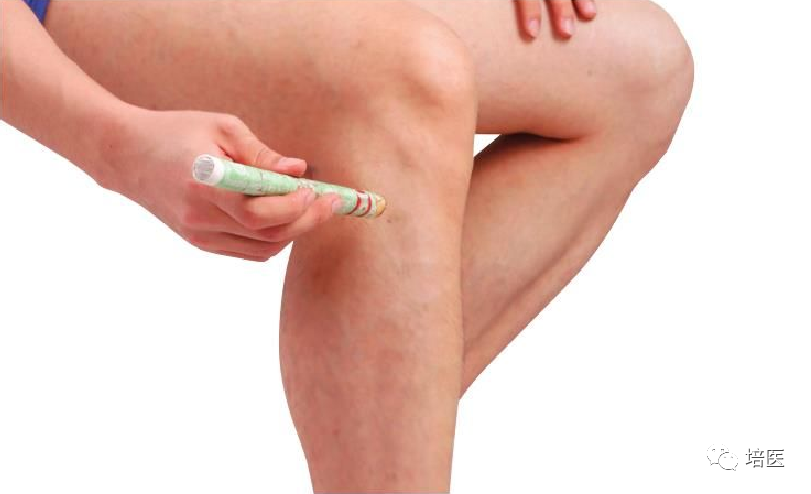
Zusanli is an important point on the “Stomach Meridian of Foot Yangming” and is known for strengthening the body and mind, earning the title of “Longevity and Health Preservation Point.” Moxibustion at Zusanli can regulate immunity, enhance disease resistance, adjust the spleen and stomach, and tonify Qi.Individuals can purchase moxa sticks from pharmacies, light them, and hold them 3-5 cm away from the skin at the Zusanli point. Generally, each session should last 30 minutes, until the skin becomes slightly red and warm. Individuals with a harmonious constitution can perform moxibustion 1-2 times a week, and every other day in winter.2. Massage Laogong and Yongquan for Better SleepThe Laogong point is located in the center of the palm, corresponding to the tip of the middle finger when the fist is clenched. Every night before sleep, warm the palms, massage the left Laogong with the right palm, and the right Laogong with the left palm, each for 36 times, which can promote sleep.
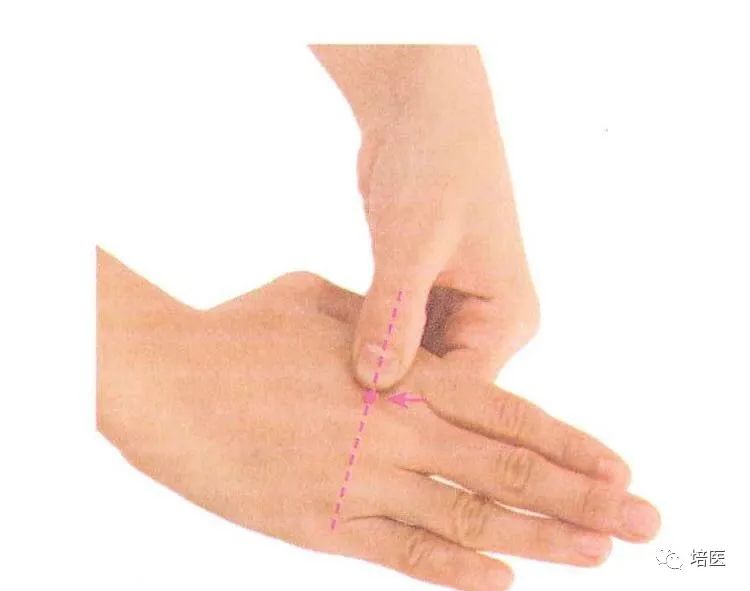
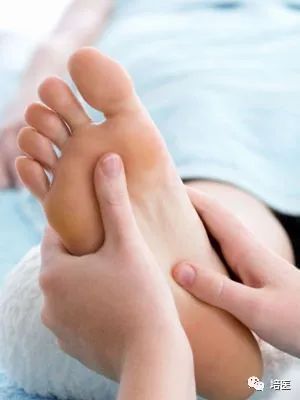
The Yongquan point is an important point on the Kidney Meridian, located on the sole of the foot, in the depression at the front of the foot, one-third of the way along the line connecting the tips of the second and third toes to the heel. Rubbing the soles of the feet with warm hands for 100-300 times can treat insomnia and high blood pressure.3. Tapping the Gallbladder Meridian to Aid DigestionTapping the Gallbladder Meridian is a great health preservation method, primarily aimed at smoothing and increasing Qi and blood, promoting bile secretion, and aiding the digestion and absorption of food.The Gallbladder Meridian runs along the outer side of the lower limbs (equivalent to the outer seam of pants), and is generally tapped with a hollow palm, with 100-200 taps being appropriate. There is no need to forcefully tap the lower leg; beginners can gradually increase the number of taps. Individuals with a harmonious constitution can persist in tapping the Gallbladder Meridian, while pregnant women, postpartum women, and the elderly or particularly weak individuals should limit the number of taps. Those with excessive liver fire should avoid tapping.Medicinal Health Preservation – Food and Medicine Share the Same Source, Excess is DetrimentalIndividuals with a harmonious constitution are generally healthy, and if they are not ill, they do not require medicinal adjustments. With the seasonal changes, they can adopt some dietary therapy methods to achieve health preservation. However, they should not use supplements indiscriminately, as excess can be detrimental.
1. Seasonal Dietary Therapy Dishes Suitable for Individuals with a Harmonious Constitution
1. Spring Liver Nourishment with SpinachIn spring, dietary therapy should focus on soothing the liver and nourishing the blood, with spinach as the top choice. Spinach is a seasonal vegetable in spring, known for its ability to nourish Yin, moisten dryness, and soothe the liver. Spinach meat soup and stir-fried spinach are excellent dietary therapy dishes.2. Summer Heat Relief with Mung BeansIn the hot summer, heart fire tends to be strong, and mung beans are excellent for relieving heat and clearing fire. Mung bean porridge and mung bean water are simple dietary therapy dishes.3. Autumn Moistening with TremellaIn autumn, the weather is dry, and the respiratory system is easily affected, leading to cough and other issues. Rock sugar tremella soup is a good choice, and adding goji berries enhances the flavor and nourishing effect.4. Winter Yang Supplementation with LambLamb has warming properties and is suitable for winter supplementation. Individuals with a harmonious constitution can eat some lamb to tonify internal Yang, but should not overindulge. It is generally best to use clear stewing methods rather than roasted lamb.2. Finding Health-Preserving Medicinal Ingredients in FoodIndividuals with a harmonious constitution can fully utilize dietary therapy for health preservation, following the principle of “food and medicine share the same source,” as some foods are excellent medicinal ingredients.1. YamYam, also known as Huai Shan, has the effects of strengthening the spleen and stomach, benefiting the lungs and kidneys, and tonifying deficiency. It is used for symptoms like poor appetite, loose stools, weakness, shortness of breath, frequent urination, and vaginal discharge. Yam can be stir-fried, stewed, or boiled.2. LilyBoth the flowers and bulbs of the lily can be used medicinally, having the effects of clearing heat, moistening the lungs, and calming the mind. It is a flower that can be used as both food and medicine, represented in dishes like rock sugar tremella lily soup.3. PerillaBoth perilla leaves and stems are commonly used in TCM for treating wind-cold colds, and perilla leaves are also excellent as a dish. Perilla has the effects of inducing sweating, relieving the exterior, and regulating Qi. It is often used in cooking as it can neutralize the toxins from fish and shrimp.In addition, there are many foods that are also medicinal. Individuals with a harmonious constitution can choose appropriately in daily life, varying their diet while achieving health preservation goals.Further Reading
-
Human Meridian and Acupoint Atlas (High Definition), Save for Reading
-
400 Acupoints, Explanation of Acupoint Names
-
[Meridian Health Preservation] Nourishing the Lung Meridian to Eliminate All Illnesses, Health Benefits of the Hand Taiyin Lung Meridian
-
[Health Preservation Secrets] Morning Tooth Tapping, Saliva Swallowing, Health Preservation Methods That Can Be Done Anytime
-
[Seasonal Health Preservation] 24 Solar Terms Moxibustion Health Preservation Methods and Acupoint Explanations
-
[Meridian Health Preservation] The Cleaner on Duty at the Hour of the Rabbit, A Versatile Worker Balancing Three Locations, Health Benefits of the Hand Yangming Large Intestine Meridian
-
[Meridian Health Preservation] Nourishing the Lung Meridian to Eliminate All Illnesses, Health Benefits of the Hand Taiyin Lung Meridian
Recommended Columns
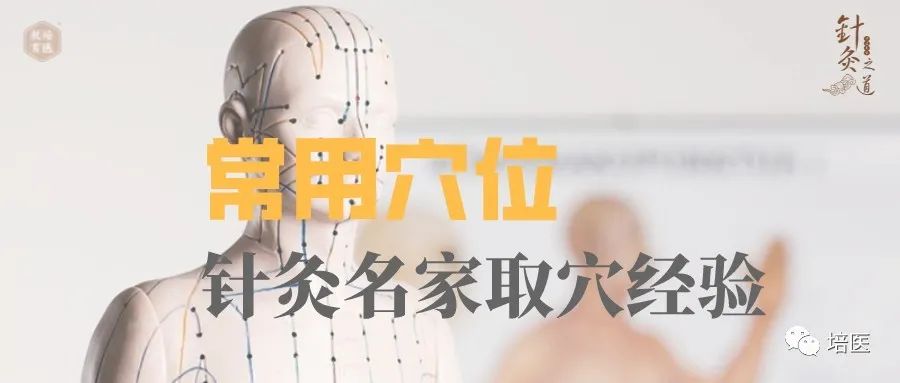
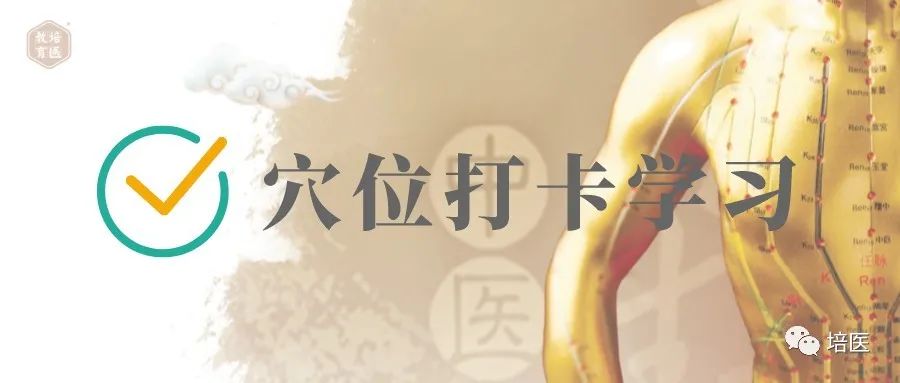
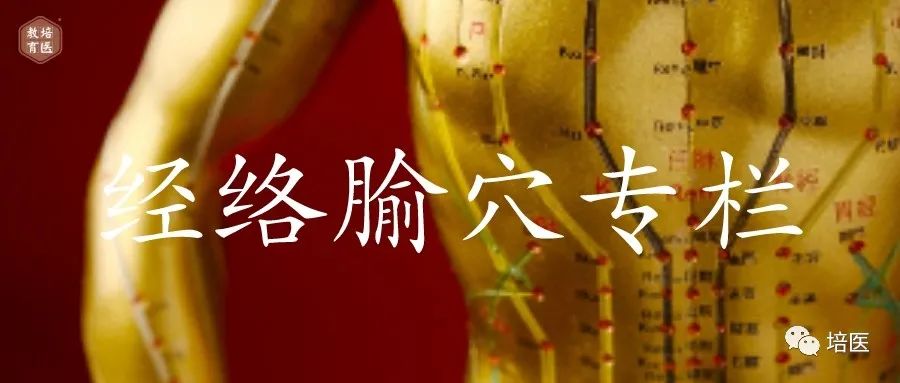
○ Note: This article is organized by Peiyi Education (www.tcmedu.com), excerpted from “Constitution Health Preservation Strategies” by Ma Lei. The various prescriptions and remedies mentioned are for reference and learning only and should not be used as prescriptions. Please do not use them blindly; this platform does not bear any responsibility for any consequences arising from this!


